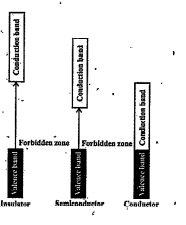What are three types of plants on the basis of their lifespan ?Solution in Odia
The correct Answer is:Annual,biennial,perennial
Step by step video, text & image solution for What are three types of plants on the basis of their lifespan ? by Biology experts to help you in doubts & scoring excellent marks in Class 12 exams.
Updated on:21/07/2023Topper's Solved these Questions
Similar Questions
Out of 64 codons , 61 codons code for 20 types of amino acids , it is called :
View SolutionFissure of Ronalda is related to _____.
View SolutionThree types of tissue system have been recognised in plants on the basis of their functions. Select the correct option regarding this.
View SolutionHow do plants continue to grow all their lifespan ?
View SolutionAssertion :-Tissues of plants vary depending on their location in plant body. Reason :-On the basis of exclusively location tissues system is of three types.
View Solutionकॉकरोच में किस प्रकार की दृष्टि पायी जाती है
View SolutionWhat are the three types of aquaculture on the basis of the source?
View SolutionThree types of tissue system have been recognised in plants on the basis of their functions. Select the correct option regarding this.
View SolutionPlants which produce seeds only once in their lifespan.
View SolutionSolids can be classified into three types on the basis of their electrical conductivities.
i) Name three types of solids classified on the basis of electrical conductivities.
View SolutionSolids can be classified into three types on the basis of their electrical conductivities.
Name three types on the basis of their electrical conductivities.
View SolutionHow are plants classified based on the lifespan?
View SolutionWhat are the general characteristics of nonvascular plants, and what are the three main types ?
View SolutionGeneral Introduction || Lifespan || Types OF Reproduction
View SolutionSexual Reproduction in Flowering Plants || Megasporo Genesis|| Megagametogenesis || Types OF Embryo Sac || Types OF Ovules || On The basis OF Number OF Integuments || On The Basis OF Development OF Nucleus || On The Basis OF Structure
View Solution
